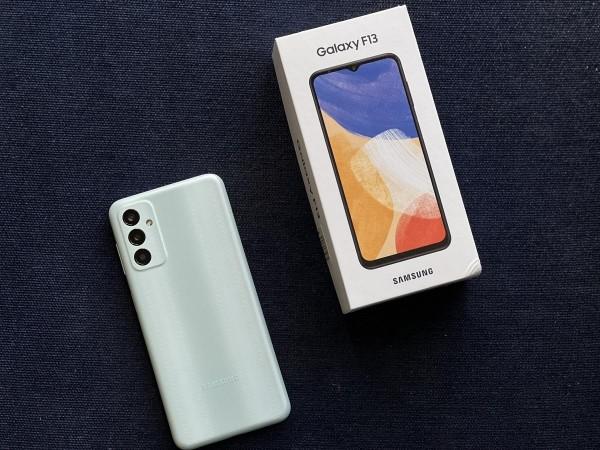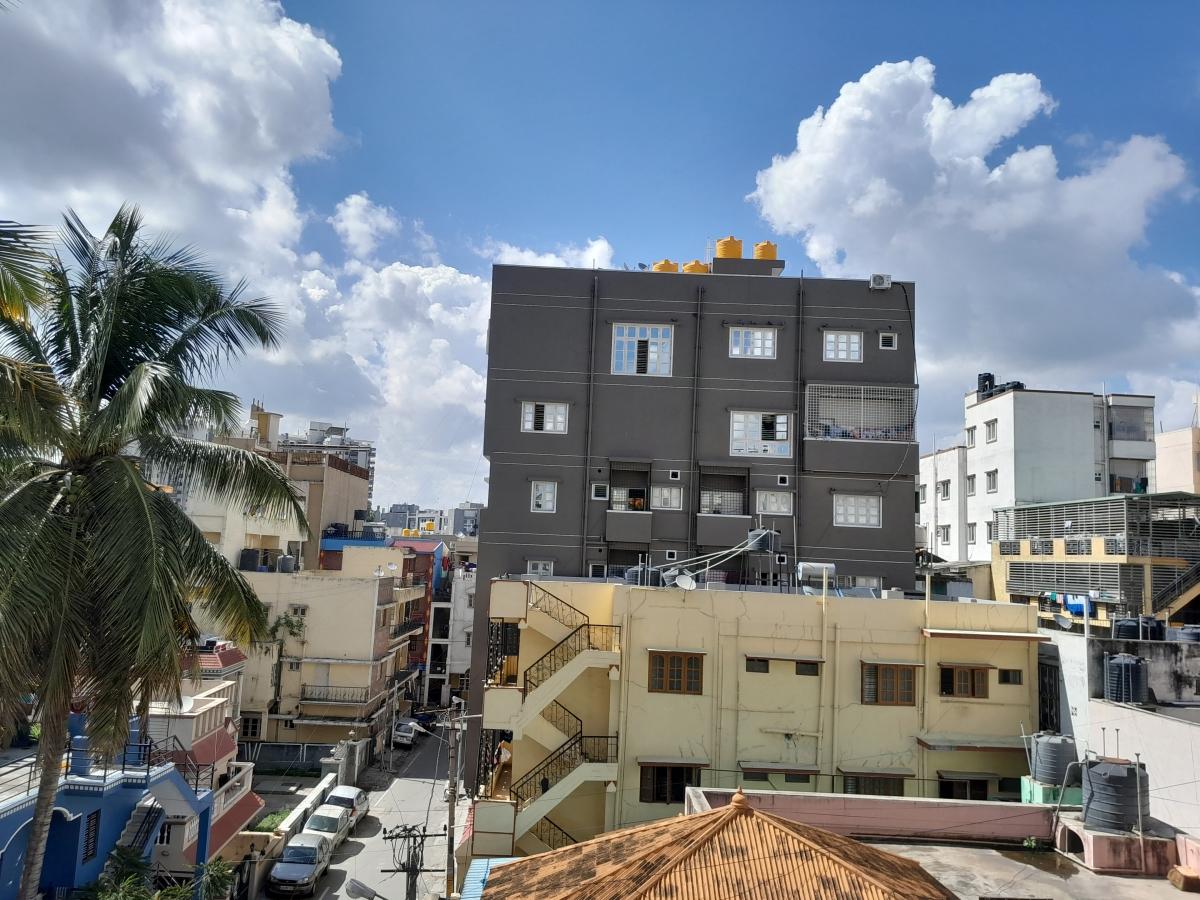Samsung's smartphone game is strong. From flagship to mid-range and even budget categories, Samsung offerings are everywhere. If you're in the market for an entry-level smartphone, Samsung recently launched the Galaxy F13, packed with a huge battery, compelling design and more.
Samsung Galaxy F13 comes in two configurations, 4GB+64GB and 4GB+128GB, priced at Rs 11,999 and Rs 12,999, respectively. There are interesting colour options, which include Sunrise Copper, Nightsky Green and Waterfall Blue. All the colours are refreshing and we don't even miss the traditional offering. Our review unit came with 128GB storage in Waterfall Blue shade and here are our thoughts on the phone.
Design and display
Samsung goes for the stylish and chic look for its F13, much to the liking of youth. At first glance, the smartphone makes a lasting impression. Given that the phone has plastic construction, it doesn't feel so. The textured plastic back offers a solid grip. The phone is a tad heavier and thick too, but that's expected given the battery size.

The camera module is ever-so-slightly protruded, it's almost on the same level as the back panel. There are three camera sensors vertically aligned and there's an LED sensor towards the right. Samsung's logo doesn't stand out, as it is camouflaged well using the shade of the phone. We kinda liked the subtlety.

The back cover curves into the sides and the corners are rounded, contributing to the overall grip. The USB Type-C port sits at the bottom alongside speaker and 3.5mm jack. On the right are the volume controls and the power/lock button, which also doubles as a fingerprint scanner. The SIM card cum microSD card tray can be found on the right.

Samsung Galaxy F13 has a 6.6-inch FHD+ LCD display with an Infinity-V design, which is binge-worthy. But if you're comparing it against an AMOLED panel, you'll be disappointed. On its own, the F13's display gets 480 nits of brightness, Gorilla Glass 5 protection and offers decent colour rendition, suitable for viewing videos and internet browsing. Under direct sunlight, the display brightness needs to be adjusted to the maximum setting for better viewing, but remains a struggle

Overall, the F13 offers a stylish and durable design and a decent display.
Camera
On paper, Samsung Galaxy F13's camera specs are promising, the main lens in particular. There's a 50MP primary sensor coupled with 5MP wide angle lens and a 2MP depth sensor. All these sensors work together to offer users a myriad of options.

When we put the main sensor to test, we got mixed results. In daylight, the results are sharp, vibrant and clear. Even in an indoor setting with sufficient lighting, the camera captures a good amount of details and vibrant colours. But that's as far as it goes. In low light, the camera struggles to perform. There's no Night Mode to support the phone in dim lighting, which means as the evening progresses, expect a dip in the image quality. The results lack details, colours appear washed out and the light is not condensed when the sensor is pointed in its direction.
The ultra-wide-angle mode is usable in natural sunlight for better results. The FOV is definitely more with a slight shift in the colour rendition and little distortion. The same mode doesn't yield ideal results indoors and gets worse in low-light. The role of 2MP sensor wasn't defined well in perfecting those portrait shots with the bokeh effect.
The handset has an 8MP selfie snapper, which is average at best. Check out some samples below:
Performance
Samsung Galaxy F13 is powered by Exynos 850 chipset, which is equivalent to Snapdragon 678. But the latter has an edge over the Samsung chipset, which is a risky decision if it intends to outperform rivals. As a daily driver, the F13 performs decently. The apps were evidently slow to launch at first, but the pace picked up as cache gathered and the apps ran in the background. The camera UI took noticeably long to click photos. We frequented between 5-6 apps on a daily basis, and the phone could stand its tasks well. The phone isn't for avid gamers, but some basic games will make your time pass.

The phone comes with 64GB onboard storage as well, but our recommendation is to go for 128GB for the extra grand. The interface is relatively simple and in line with what we've used in the past. The OneUI 4.1 based on Android 12 is loaded with bloatware, but you also get the option to offload unnecessary apps.

There are many levels of personalisations; offering everything from dark mode, the colour palette for the theme, and more. The phone also gets two years of major updates and two years of security updates.

Battery
Samsung Galaxy F13 is powered by a generous 6,000mAh battery, which is its biggest USP. This is an ideal phone for those who want a truly reliable battery in a phone. Even heavy users can easily get a full day's worth of use, and if you're a light user, don't worry about those bars for days. Interestingly, the phone when left idle didn't drain out.
If your usage revolves around calls, IMs, internet browsing, social media, camera and binge-watching, a day and half day's worth of use is almost guaranteed with a full battery.
But with monster batteries, the biggest concern is charging. The phone gets 15W fast-charging support, which barely does the job. It takes almost 2 hours to go from 0-100 percent. Thankfully, the phone comes with an adapter, which saves you the trouble of buying a new one. Does it make up for the charging time? It's for you to decide.
Verdict
Samsung Galaxy F13, as a whole, makes for a solid package. The phone's battery and design are the most appealing factors, while the camera, software and performance do a decent supporting job. The downsides of the phone are slow charging, underwhelming display, and low-light photography. But the phone is retailing in the sub-Rs 15K category, which gives it some leeway.

































![Limited edition Phone (3a) launched in India; what's special about it [read now]](https://data1.ibtimes.co.in/en/full/825642/limited-edition-phone-3a-launched-india-whats-special-about-it-read-now.png?w=220&h=135)